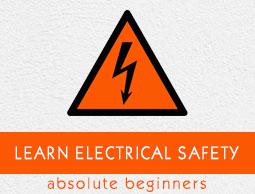Electrical Safety - Crane Handling Safety
The loads can be raised, lowered or moved with the help of the crane and its foundations. It is a risky task for an operator. If there is any type of failure such as structural failure, overturning, collapse, loose contacts or falling objects, it can harm the load, other equipment and workers. To eliminate the hazards the OSHA standards describes the procedure for safe load handling with cranes. It also covers the equipment safety and the responsibilities of a crane operator for safe crane operation. Before handling the load, the crane system is required to check minutely.
Pre-Use Safety Checking
It is always recommended to go for precautions to ward off hazards. The inspection ensures crane safety by testing it vividly.
The workspace should be a wide area and a registered crane is used to handle the material.
The operator should be well qualified, certified and licensed to use cranes.
The workplace factors like ground bearing capacity, wet or windy climate are considered for the safety of crane.
The installation and commissioning activities must be supervised by an expert.
The components must be assembled in the correct sequence including a limit switch, load indicator, sling connection, ropes, and other attachments.
If there is any defective system present then replace it immediately.
Check the crane for oil leakage, vibration or sound.
Be familiar with the control device.
Check the indicators such as load indicator, workspace limiter, anti-collision device and crane motion indicator.
Check the hook block and make sure that it is good in working condition
Check the wire rope for any deformation like a broken wire, strand distortion, kinks, excessive wear, bird caging, crushing, rusty and stretching.
Make sure that the sling angle is always greater than 45ᵒ
Operational Safety
The operator must consider the following safety problems and avoid accidents while working with crane and hoist.
| Sr.No. |
Description |
Examples |
| 1 |
There are no new hazards on the operating environment. |
 |
| 2 |
Assumptions and doubts lead to accidents. |
 |
| 3 |
Crane must take the load from the center not from the side. Avoid swinging of the load |
 |
| 4 |
Don’t lift the load over people |
 |
| 5 |
Don’t pull the hoist rope or chain as a sling |
 |
| 6 |
Don’t try to be a multi-tasker |
 |
| 7 |
Ensure the load is connected properly and communicate clearly with other team members |
 |
| 8 |
Ensure the clearance between cranes and fixed objects. A≥ 750mm and B≥ 600mm |
 |
| 9 |
Don’t leave suspended load unattended |
 |
Emergency Safety
The emergency plans should be prepared at the time of installation for each workplace where the crane will operate.
There should be an emergency entry and exit facility from a crane.
The emergency plan should be tested for its effective response and the same must be notified to the emergency services.
The emergency procedure training must be provided to the workers.
Medical facility should be available near the operating area.
The evacuation location signs should place at a point where the workers can see everything at the workplace.
Questions
1. How much is the sling angle for safety purpose?
a) less than 45ᵒ
b) more than 45ᵒ
c) less than 60ᵒ
d) more than 60ᵒ
Ans: b
Explanation
If the sling angle is greater than 45ᵒ, then the load will be lifted properly parallel to the horizontal surface. If the angle differs, then the load will be tilted and may cause hazards.
2. How much is the safety clearance between the crane and load?
a) ≥ 750mm
b) ≤ 750mm
c) = 750mm
d) None of these
Ans: a
Explanation
For safety purpose, the calculated clearance between crane and load is more than 750mm.
3. What will happen when the crane lifts the load from a side?
a) the load will be tilted
b) load swings
c) the load may fall down
d) All of the above
Ans: d
Explanation
If the crane lifts a load from one side, then the load will tilt, swing or fall down. This can lead to hazards. So it is recommended to lift the load at its centre.











